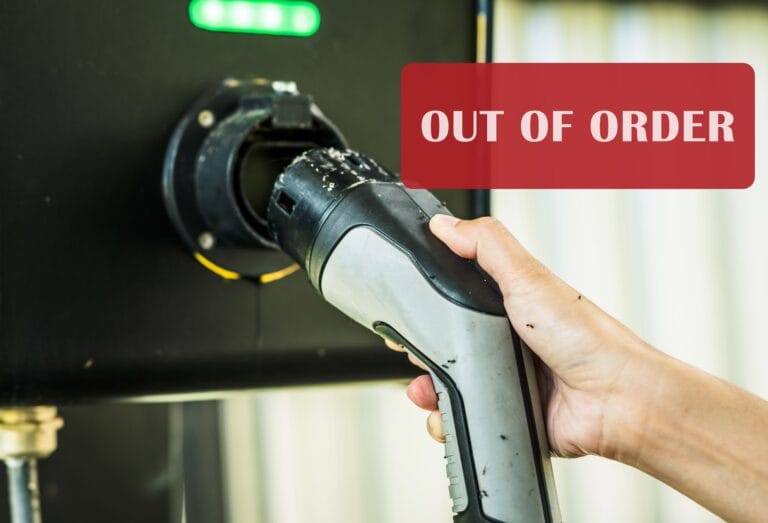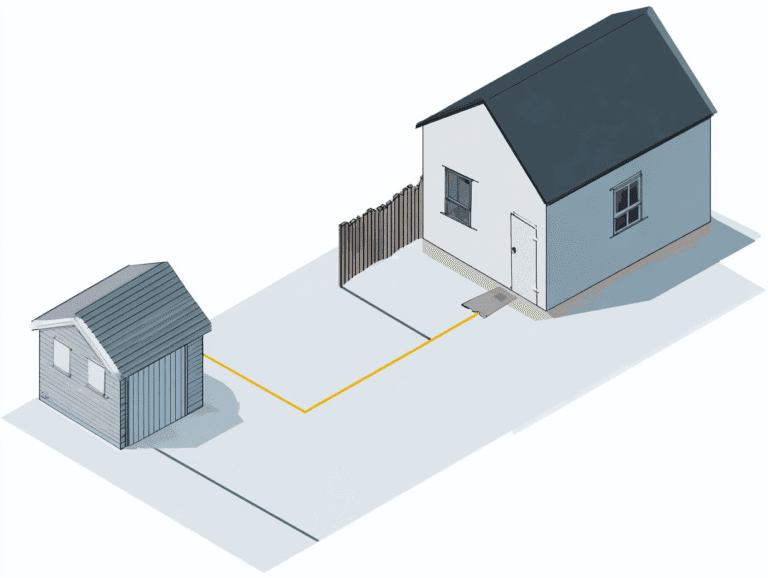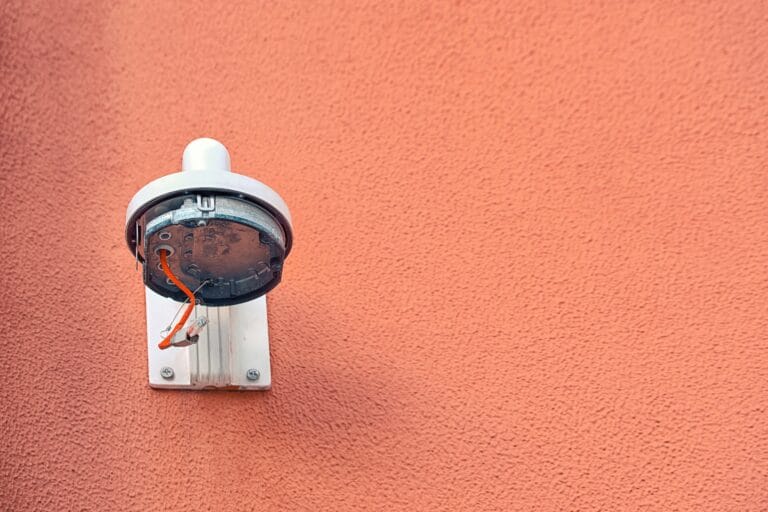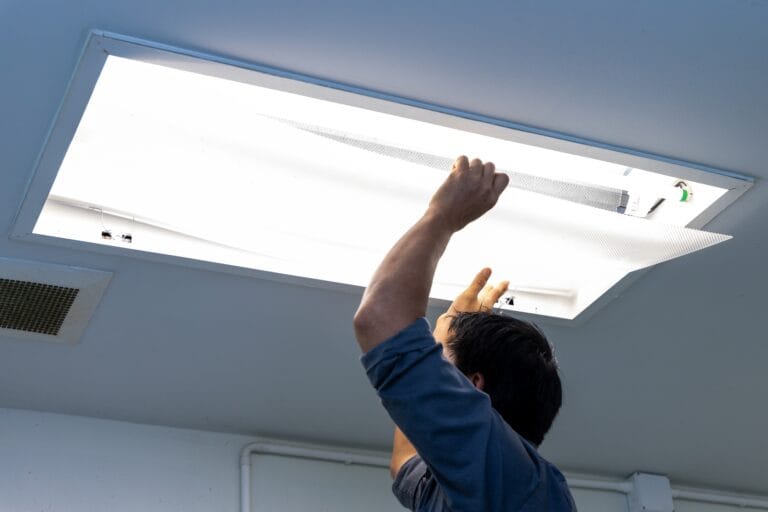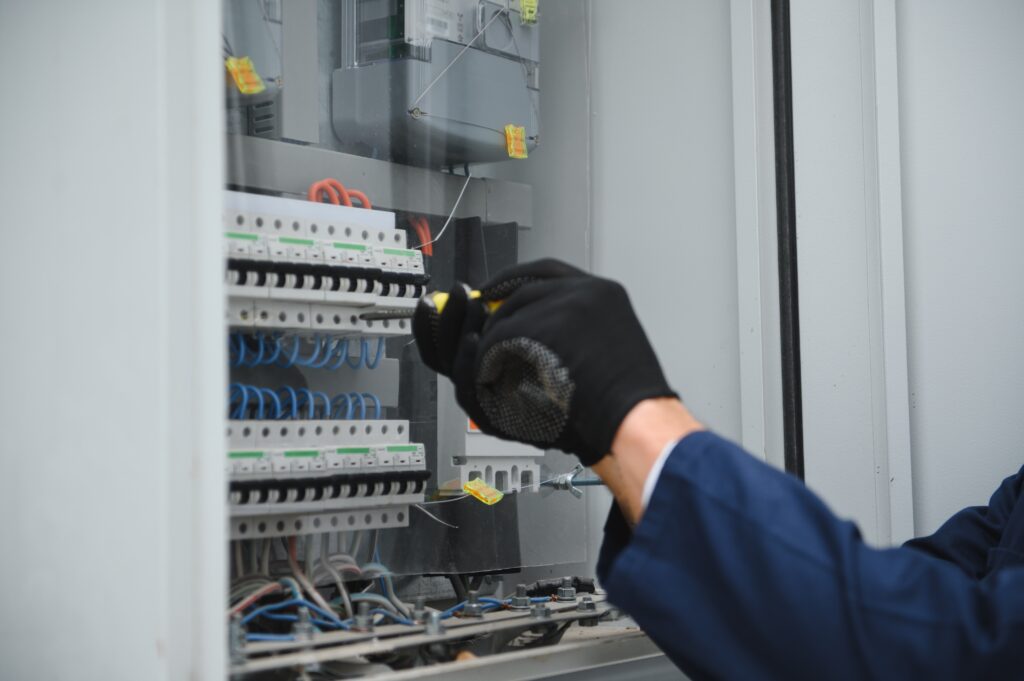
Your switchboard is a crucial part of your home’s electrical system. It quietly distributes power to every circuit, outlet, and appliance you use every day. When it’s working well, you hardly notice it. But when it malfunctions, you face serious safety hazards and potential disasters.
Upgrading your switchboard on time isn’t just about keeping up with the latest technology—it’s also about protecting your family, your property, and your peace of mind. Outdated switchboards can’t meet the electrical needs of modern homes, where multiple devices charge at once, air conditioners run for long periods, and smart home systems operate continuously. If you suspect that your switchboard is outdated, consider upgrading it to ensure the safety of your home.
You may be overlooking warning signs right now without fully understanding their seriousness. From frequent circuit breaker trips to burning smells, these red flags indicate that your electrical safety is at risk. This guide will help you identify 10 critical signs that your switchboard requires urgent attention. Ignoring these warnings won’t make them go away—it will only increase the chances of electrical fires, equipment damage, and expensive emergency repairs.
If you observe any of these red flags in your home, it’s essential to reach out to a professional electrician right away. They can assess the situation and recommend any necessary upgrades or repairs.
Understanding Switchboards and Their Role in Electrical Safety
Your switchboard acts as the central command center for your home’s electrical distribution. Think of it as the brain that receives power from the main supply and intelligently diverts it to every circuit in your property—from your kitchen appliances to your bedroom lighting.
The switchboard function involves more than just splitting power. It houses circuit breakers or fuses that protect individual circuits from overload, preventing wires from overheating and potentially causing fires. When you plug in a new appliance or turn on multiple devices simultaneously, your switchboard manages the electrical load across different circuits.
How Switchboards Deteriorate
Electrical components don’t last forever. Over the years, your switchboard experiences:
Older homes often face a critical mismatch: switchboards designed for 1970s electrical demands now struggle with modern power-hungry appliances like air conditioners, electric vehicle chargers, and smart home systems.
The Safety Gap
Switchboards installed before the 1990s typically lack Residual Current Devices (RCDs)—life-saving safety switches that detect electrical leakage and cut power within milliseconds. Without RCDs, you’re exposed to serious electric shock risks that modern switchboards eliminate automatically. For instance, safety switches are now standard in modern switchboards, significantly enhancing electrical safety in homes.
The 10 Red Flags Indicating Your Switchboard is Overdue for an Upgrade
1. Frequent Tripping of Circuit Breakers
You’re watching TV, someone turns on the air conditioner, and suddenly the power cuts out. You trudge to the switchboard, flip the breaker back on, and the cycle repeats itself days or even hours later. This isn’t just an inconvenience—it’s one of the most obvious signs you need a switchboard upgrade.
Circuit breaker tripping happens when the breaker detects an unsafe condition and cuts power to protect your home. While occasional trips are normal (like when you plug in too many appliances at once), frequent tripping tells a different story about your electrical system’s health.
If you’re experiencing this issue often, it’s crucial to understand why your circuit breaker keeps tripping and when it’s actually dangerous.
Here’s what causes these persistent interruptions:
When your breakers trip repeatedly, they’re essentially screaming for attention. Your switchboard is struggling to manage the electrical demand flowing through your home. The breakers themselves may have degraded to the point where they’re hypersensitive, or your circuits are genuinely overloaded by modern appliances your system was never designed to support.
You might think resetting the breaker solves the problem, but you’re actually ignoring a critical warning sign. Each trip indicates your electrical system is operating beyond its safe limits. The breaker is doing its job by shutting down, but the underlying issue—whether it’s an undersized switchboard, worn components, or inadequate circuit distribution—remains unaddressed and continues to pose risks to your home’s safety.
2. Unusual Noises from the Switchboard (Buzzing, Humming, Crackling)
Your switchboard should operate silently. If you’re hearing electrical noises like buzzing, humming, or crackling coming from your electrical panel, you’re dealing with one of the clearest signs you need a switchboard upgrade.
These switchboard sounds aren’t just annoying—they’re warning signals:
When electrical connections become loose due to age, vibration, or thermal expansion and contraction, they create points of high resistance. This resistance generates heat and causes the electrical current to “jump,” producing those distinctive sounds you’re hearing. These loose connections represent serious fire hazards that won’t resolve themselves—they’ll only worsen with time.
If you’re experiencing these auditory warnings alongside other issues like circuit breaker tripping or electrical overload, your switchboard is actively failing and requires immediate professional assessment.
3. Burning Smells or Excess Heat Around the Switchboard
Your nose knows danger when it comes to electrical problems. A burning smell near your switchboard is one of the most urgent signs you need a switchboard upgrade. This acrid odor signals that wiring insulation is melting or components are overheating—both serious fire hazards that demand immediate attention.
An overheating switchboard creates multiple risks you can’t afford to ignore:
When you notice your switchboard feels warm to the touch or radiates heat, you’re witnessing electrical overload in real-time. Modern appliances draw significant power, and older switchboards weren’t designed to handle these demands. The combination of aged components and increased load creates a dangerous fire hazard that puts your entire property at risk. You need to treat any burning smell or excessive heat as an emergency requiring immediate professional assessment.
4. Flickering or Dimming Lights When Using Appliances
You turn on the microwave and notice the kitchen lights dim. You start the air conditioner and see the living room lights flicker. These aren’t just random electrical issues—they’re signs you need a switchboard upgrade.
Flickering lights and dimming lights when using appliances indicate overloaded circuits or deteriorating wiring connections. Your switchboard is having trouble distributing enough power to multiple circuits at the same time. When you plug in appliances that require a lot of power, the electrical overload forces your system to redistribute power, causing voltage drops that result in dimmed or flickering lights.
This appliance load problem reveals two critical issues:
The voltage fluctuations don’t just affect your lighting—they can also damage sensitive electronics and indicate dangerous wiring conditions. If you’re consistently experiencing this warning sign, it’s clear that your switchboard needs professional evaluation and likely replacement.
5. Presence of Old Ceramic Fuses Instead of Modern Circuit Breakers
If you open your switchboard and spot ceramic fuses instead of modern circuit breakers, you’re looking at outdated electrical components that pose serious safety risks. These old fuse boards operate fundamentally differently from today’s technology—when a ceramic fuse blows, you need to physically replace it with a new one, creating delays and potential hazards if you install the wrong amperage.
Modern circuit breakers offer significant advantages:
The safety concerns with old fuse technology extend beyond inconvenience. Homeowners often replace blown fuses with incorrect ratings, bypassing the protection system entirely. Some even resort to dangerous “fixes” like wrapping wire around blown fuses. These outdated electrical components lack the rapid response times of modern breakers, increasing your risk of electrical fires and equipment damage. When you spot ceramic fuses, you’re seeing clear signs you need a switchboard upgrade immediately.
6. Overloaded Circuits Due to Increased Demand from Modern Appliances
Your home’s electrical needs have significantly increased. With the use of EV chargers, multiple smart home devices, powerful gaming computers, and simultaneous tablet charging, you are consuming much more energy than what was typical for homes twenty years ago.
Older switchboards were built when a household’s main power sources were likely just a TV and a washing machine. They simply can’t support the energy demands of today’s lifestyle. Overloaded circuits can be identified by:
These are clear indications that you need to upgrade your switchboard. Your outdated board from the 1980s wasn’t designed for a time when families charge three electric vehicles overnight while using smart thermostats, security systems, and home offices. The excessive electrical load isn’t just an inconvenience—it’s hazardous. When circuits consistently function at or near their limit, wiring can overheat, insulation can deteriorate, and the risk of fire can increase dramatically.
7. Missing Safety Switches (RCDs) or Lack of Clear Labeling on the Switchboard
When you open your switchboard, you should see clearly labeled residual current device (RCD) switches—commonly known as safety switches. These devices are your first line of defense against electric shocks, cutting power within milliseconds when they detect current leakage. If your switchboard lacks RCDs or features faded, illegible labels, you’re looking at one of the clearest signs you need a switchboard upgrade.
Why RCDs matter:
Poorly labeled switchboards create dangerous situations during emergencies. When you can’t identify which breaker controls which circuit, you waste precious seconds during electrical overload situations or circuit breaker tripping events. Electricians also face increased risks when performing maintenance on unlabeled boards. If your switchboard predates current safety regulations, the absence of proper RCD protection represents a serious hazard that demands immediate professional attention.
8. Visible Scorch Marks or Discoloration Near Breakers or Fuses
Scorch marks and discoloration around your switchboard components are among the most alarming signs you need a switchboard upgrade. These visible electrical damage signs indicate dangerous internal faults that have already begun to show.
When you see brown, black, or yellow discoloration near breakers or fuses, it means there are problems like arcing, overheating, or loose connections. These marks suggest that electrical current has been jumping between conductors or that components have been operating at temperatures they were never meant to handle. The plastic casing around breakers may look melted or warped, indicating that your switchboard has been struggling with too much heat.
Circuit breaker tripping often happens alongside these visual warning signs, pointing to electrical overload conditions that your old system can’t handle safely. The presence of scorch marks significantly increases the risk of fire—what you see on the outside is only a small part of the damage happening inside the switchboard. These marks don’t appear suddenly; they develop as connections deteriorate and resistance builds up over months or years of use.
Additionally, if your property has commercial solar systems, it’s important to know that recent data shows a worrying trend where 22% of these systems fail compliance checks. This could potentially lead to severe financial losses for businesses. Therefore, ensuring your solar systems meet the necessary standards is just as important as addressing any issues with your switchboard.
9. Switchboards Not Inspected for Over 20 Years
When was the last time a licensed electrician actually opened your switchboard for a thorough inspection? If you can’t remember—or if the answer stretches back two decades or more—you’re sitting on a ticking time bomb.
Electrical inspection intervals aren’t just bureaucratic recommendations. They’re critical safety checkpoints designed to catch deteriorating components before they fail catastrophically. Australian electrical standards recommend professional inspections every 10-15 years for residential properties, yet countless homeowners go 20, 30, or even 40 years without a single comprehensive check.
During these decades of neglect, connections loosen, insulation degrades, and components designed for a 20-year lifespan continue operating well beyond their safe working life. You might not see circuit breaker tripping or obvious signs you need a switchboard upgrade, but internal corrosion and metal fatigue progress silently.
The consequences compound over time:
Professional electricians use thermal imaging cameras, insulation resistance testers, and circuit analyzers to identify problems invisible to the untrained eye. These inspections typically cost a few hundred dollars—a fraction of the expense you’ll face after an electrical fire or complete system failure.
10. Use of Asbestos-containing Materials in Older Switchboards
If your home was built before the 1990s, your switchboard might contain asbestos-based backing boards or insulation materials. This hazardous material in switchboards poses serious health risks when disturbed during maintenance or upgrades. Asbestos fibers, when released into the air, can cause severe respiratory diseases including mesothelioma and lung cancer.
You won’t always know asbestos is present just by looking at your switchboard. The material was commonly used for its heat-resistant properties in electrical installations. Licensed electricians can identify potential asbestos-containing materials during inspections, but you should never attempt to remove or disturb these components yourself.
Safe removal requires:
The asbestos risk alone makes older switchboards a priority for professional assessment. If you suspect your switchboard contains asbestos, contact a qualified electrician immediately to arrange proper testing and safe removal procedures.
Consequences of Ignoring These Red Flags
Ignoring the warning signs of an outdated switchboard puts you at serious risk—both financially and physically. The fire risk alone should be enough to prompt immediate action. Faulty switchboards are a leading cause of electrical fires in Australian homes, and the damage can be catastrophic.
When your switchboard fails unexpectedly, you’re looking at emergency repairs cost that can easily run into thousands of dollars. Emergency callouts outside business hours carry premium rates, and you’ll have no time to shop around for competitive quotes. You’re at the mercy of whoever can respond fastest.
Insurance claims denial is another harsh reality many homeowners face. If an electrical fire or incident occurs and your insurer discovers you’ve neglected obvious warning signs or failed to maintain your switchboard to current safety standards, they may refuse your claim entirely. You could be left covering the full cost of repairs, replacements, and temporary accommodation.
Legal liability becomes your burden if someone is injured due to electrical faults you’ve ignored. Property damage to neighboring homes from electrical fires originating in your switchboard can result in costly lawsuits.
The question “Is your switchboard overdue for an upgrade? 10 red-flags you’re ignoring” isn’t just about maintenance—it’s about protecting your family, your property, and your financial security. The cost of upgrading your switchboard is minimal compared to the potential consequences of inaction.
FAQs (Frequently Asked Questions)
Why is it important to upgrade my switchboard timely?
Upgrading your switchboard timely is crucial because it serves as the heart of your home’s electrical system. Timely upgrades ensure electrical safety, prevent overloads, and incorporate modern safety features like Residual Current Devices (RCDs), reducing the risk of fire hazards and costly emergency repairs.
What are the common signs that indicate my switchboard needs an upgrade?
Common red flags include frequent tripping of circuit breakers, unusual noises such as buzzing or humming, burning smells or excessive heat around the switchboard, flickering or dimming lights when using appliances, presence of old ceramic fuses instead of modern circuit breakers, and visible scorch marks or discoloration near breakers or fuses.
How do overloaded circuits affect my home’s electrical system?
Overloaded circuits occur when modern appliances and increased electrical demand exceed the capacity of older switchboards. This can cause frequent breaker trips, flickering lights, overheating components, and increase fire risks due to strain on outdated wiring and protective devices not designed for current loads.
What safety features might be missing in older switchboards?
Older switchboards often lack modern safety features such as Residual Current Devices (RCDs), which are essential for preventing electric shocks. They may also contain outdated components like ceramic fuses instead of circuit breakers, lack clear labeling, and sometimes include hazardous materials like asbestos that pose health risks during maintenance.
How often should my switchboard be inspected by a professional?
It is recommended to have your switchboard professionally inspected at least every 20 years. Neglecting regular inspections can lead to unnoticed degradation or faults that increase the risk of electrical failures, fire hazards, and may result in insurance claims being denied in case of damage.
What are the potential consequences of ignoring red flags indicating a switchboard upgrade is needed?
Ignoring these red flags can lead to serious consequences including increased fire risk due to overheating or faulty components, costly emergency repairs, potential denial of insurance claims following incidents, and overall compromised electrical safety within your home.

